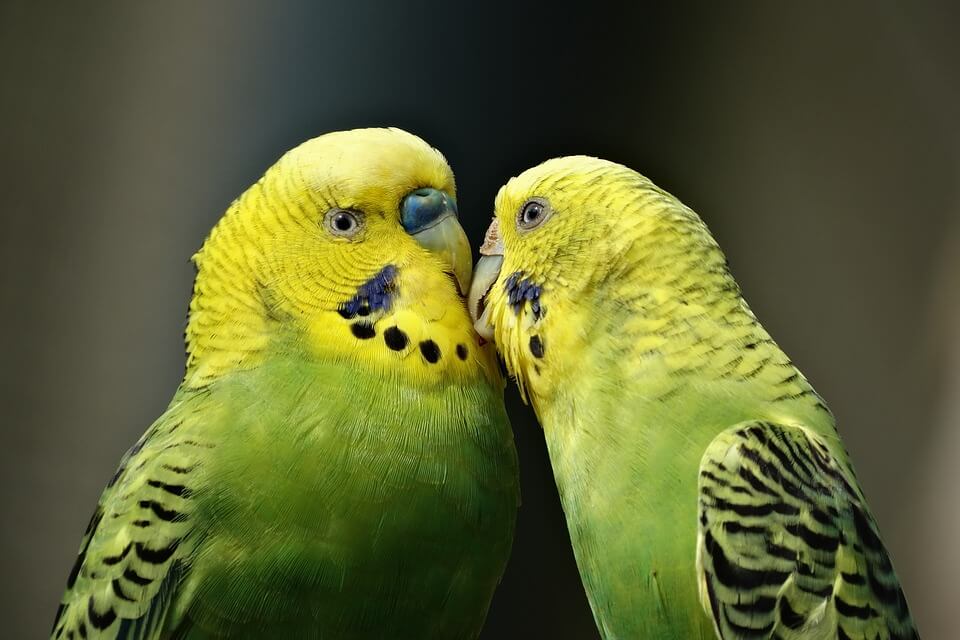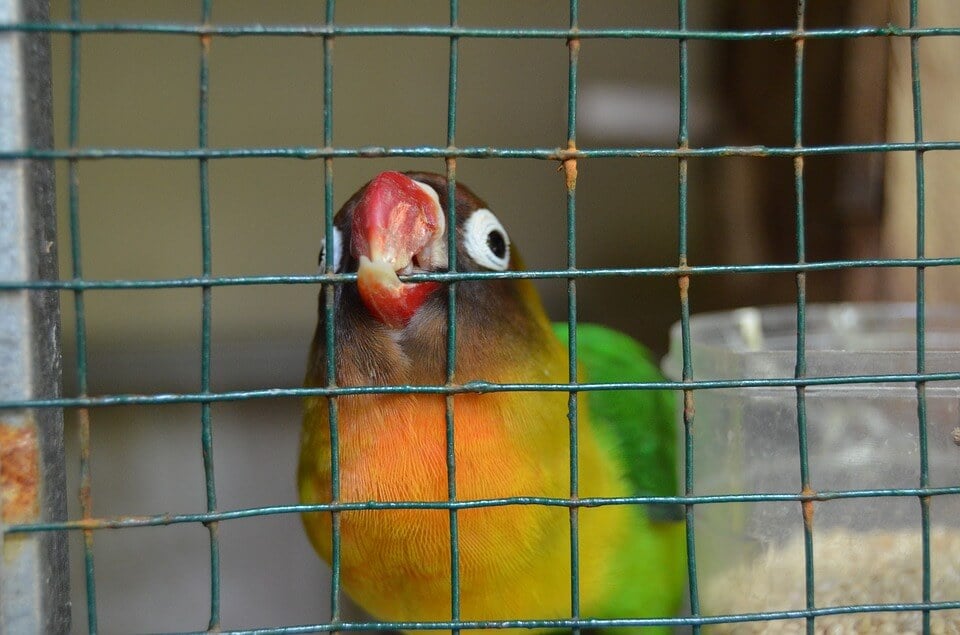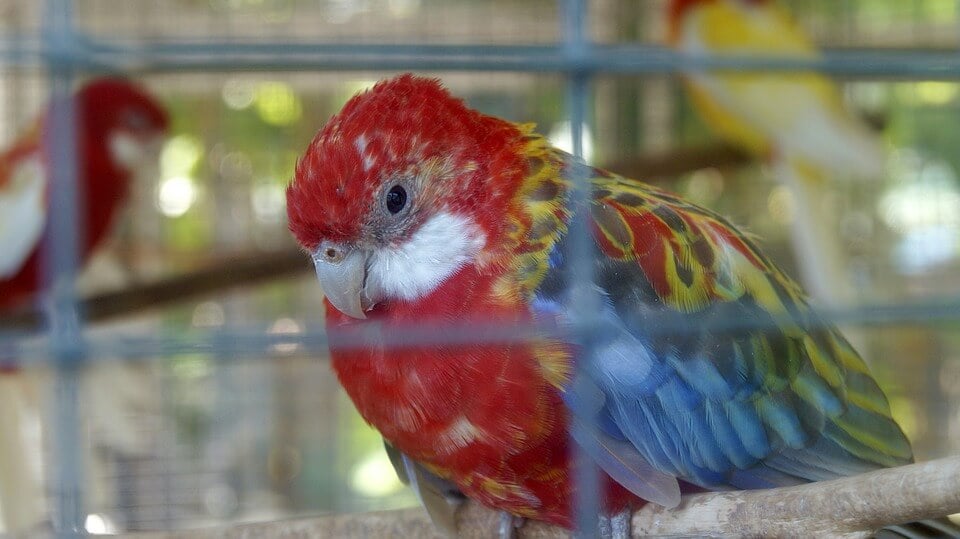Birds Kept as ‘Pets’
Birds are colorful and smart and have the amazing ability to fly. The wandering albatross, for example, can travel as far as 10,000 miles without stopping! In nature, these social animals find mates and join flocks. They don’t like being alone, and they call out to one another if they are separated. Birds spend hours side by side, chirping to each other while foraging for food, playing, and flying.

Birds Sold in the Pet Trade
Even though birds are meant to fly and forage with their families, many are kept caged as “pets.” Birds—from different types of parrots to finches and more—are the third most popular companion animal in the U.S., with about 10 million of them trapped in cages all around the country. All these caged birds were either taken from their homes in nature or bred in captivity.
Just as there are puppy mills that breed dogs in horrible conditions, there are also parrot mills. Breeders warehouse thousands of birds in dirty, dark cages, where they can’t stretch out their wings fully—just like hens used for eggs.

Most People Don’t Know How to Properly Care for Birds Kept as ‘Pets’
Many people buy birds without realizing how much time, money, and energy goes into caring for them. Birds kept as ‘pets’ need a lot of interaction, expensive toys, healthy food, and large cages. When people who buy birds because they looked “cute” in pet stores find out that they can be noisy, messy, destructive, and curious animals, they are often given away or forced to stay in their cages for their entire lives. Some birds can live to be older than 100 years, but not many captive ones reach that age.
Life in a Cage Is No Life for a Bird
Birds kept as ‘pets’ are often so frustrated and lonely that they begin to hurt themselves. They pull out their own feathers, injure their skin, bob their heads, pace back and forth, peck over and over again at the cage bars, and shake or even collapse from anxiety.

How You Can Help Birds Kept as ‘Pets’
Your family should never buy a bird—or any animal—from a pet store or breeder and shouldn’t buy any animal companion supplies from pet stores that sell birds. Make sure to buy treats, toys, and food for your dogs and cats from stores that don’t sell birds. If you or your friends already share your home with a bird, there are a few things you and your grownups can do to make sure you’re giving them the best life possible:
- Let the bird out of the cage for a good amount of time every single day. Make sure overhead fans are turned off and any mirrors in the room are covered before you open the cage door.
- Whistle with them, and let them perch on your shoulder if they want to. Birds are curious and like to nibble on shiny things so remove your earrings and your glasses before they land on you if you can!
- Work with your grownups to take them to an avian veterinarian for annual checkups. You can call to set up the appointments for your grownup and go with your bird so he or she feels safe.
- Cover the cage with a sheet that allows ventilation at night from dusk until morning. (Birds like to sleep for about 12 hours.)
- Watch out for dangers like open toilet bowls, electric wires, and other household items or locations where birds can become stuck or injure themselves. Make sure you and your grownups don’t cook with nonstick cookware because the fumes can kill birds.
- Give them lots of fresh fruits, veggies, and toys to keep them occupied. Birds forage for their food in nature and have active minds that need to be kept busy by solving puzzles.
- Feed them a healthy diet specific to their species. Consult your avian veterinarian.


Under 13? Ask your parents bee-fore you continue!